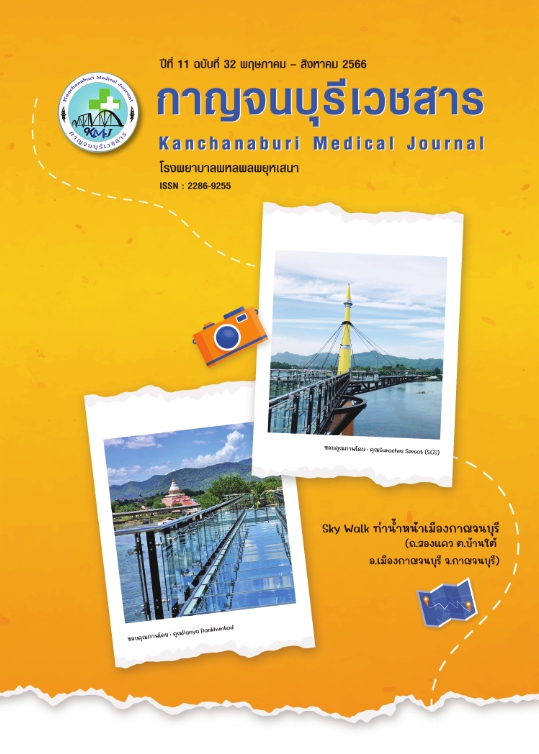Physical fitness after 3 and 6 months recovery from COVID-19 infection in pre-cadet
Abstract
Since the outbreak of COVID-19 to early January 2023, with 659 million cases worldwide, some survivors has symptoms after recovering from long-term infection (long COVID) that continue for several weeks (12 weeks or more) with multisystem symptoms – respiratory, cardiovascular, kidneys, brain, etc., which may lead to a decrease in physical fitness among military students. Which will be a problem for training and future missions. Objective To study the physical fitness of pre-cadets 3 and 6 months after recovering from COVID-19 infection, whether their physical fitness has decreased or not.
Method Take all pre-cadet to test their physical fitness (pulse at rest, sitting up, push-ups, pull-ups, running, body fat, muscle mass, bone mass etc.). After that, when there is an outbreak of COVID-19, the students were divided into two groups: infected and non-infected. After the symptoms of COVID-19 were cured, both groups were tested for physical fitness 3 and 6 months after infection, the results obtained were statistically compared.
Results 3 months after COVID-19 infection in pre-cadets were found that physical fitness increase in sitting up, push-up and running topics at statistically significant level of 0.01 (p < 0.001). Physical fitness of pre-cadets 6 months after infection with COVID-19 in the tests of sitting up, push-ups, pull-ups and swimming, its was found to be significantly improved at the 0.01 level (p < 0.001).
Conclusion After 3 and 6 months of recovery from COVID-19 infection, the infected pre-cadets showed no decline in physical fitness.
References
Crook H, Raza S, Nowell J, Young M, Edison P. Longcovid-mechanisms, risk factors, and management. BMJ. 2021;26:374:n1648.
Su Y, Yuan D, Chen DG, Ng RH, Wang K, Choi J. et al. (2022). Multiple early factors anticipate post-acute COVID-19 sequelae. Cell 2022; 185:881–95.e20.
Tenforde MW, Kim SS, Lindsell CJ, Rose EB, Shapiro NI, Files DC. et al. Symptom Duration and Risk Factors for Delayed Return to Usual Health Among Outpatients with COVID-19 in a Multistate Health Care Systems Network - United States, March-June 2020. Morbidity and mortality weekly report 2020; 69:993–8.
Carfi A, Bernabei R, Landi F, Aute GAC-P. Persistent Symptoms in Patients after Acute COVID-19. Jama 2020; 324:603–5.
Chen C, Haupert SR, Zimmermann L, Shi X, Fritsche LG, Mukherjee B. Global Prevalence of Post-Acute Sequelae of COVID-19 (PASC) or Long COVID: A Meta-Analysis and Systematic Review. MedRxiv 2021. doi.org/10.1101/2021.11.15.21266377.
Davis HE, Assaf GS, McCorkell L, Wei H, Low RJ, Re'em Y. Characterizing long COVID in an international cohort: 7 months of symptoms and their impact. EClinical Medicine 2021. 38. doi:10.1016/j.eclinm.2021.101019.
Stavem K, Ghanima W, Olsen MK, Gilboe HM, Einvik G. Persistent symptoms 1.5-6 months after COVID-19 in non-hospitalized subjects: a population-based cohort study. Thorax 2021; 76:405–7.
Huang Y, Pinto MD, Borelli JL, Mehrabadi MA, Abrihim H, Dutt N. COVID Symptoms, Symptom Clusters, and Predictors for Becoming a Long-Hauler: Looking for Clarity in the Haze of the Pandemic. MedRxiv 2021. doi.org/10.1101/2021.03.03.21252086.
Goërtz YMJ, Van Herck M, Delbressine JM, Vaes AW, Meys R, Machado FVC. etal. Persistent symptoms 3 months after a SARS-CoV-2 infection: the post-COVID-19 syndrome? ERJ Open Res 2020; 26:00542–2020.
Szekanecz Z, Valyi-Nagy I. Post-acute COVID-19 syndrome. ORV Hetil. 2021;162:1067–8.
Zarei M, Bose D, Nouri-Vaskeh M, Tajiknia V, Zand R, Ghasemi M. Long-term side effects and lingering symptoms post COVID-19 recovery. Rev Med Virol2021: e2289.
Yuki K, Fujiogi M, Koutsogiannaki S. COVID-19 pathophysiology: A review. Clinical immunology 2020; 215:108427.
Ayoubkhani, D.Pawelek, P. Prevalence of ongoing symptoms following coronavirus (COVID-19) infection in the UK: 1 April 2021. Off Natl Stat 2021 1-16.
Mo X, Jian W, Su Z, Chen M, Peng H, Peng P. et al. Abnormal pulmonary function in COVID-19 patients at time of hospital discharge. European Respiratory Journal 2022; 55:2001217.
Mandal S, Barnett J, Brill SE, Brown JS, Denneny EK, Hare SS. et al. 'Long-COVID': a cross-sectional study of persisting symptoms, biomarker and imaging abnormalities following hospitalisation for COVID-19. Thorax2021;76:396–8.
Xie Y, Xu E, Bowe B, Al-Aly Z. Long-term cardiovascular outcomes of COVID-19. Nat Med2022;28:583–90.
Dennis A, Wamil M, Alberts J, Oben J, Cuthbertson DJ, Wootton D. et al. Multiorgan impairment in low-risk individuals with post-COVID-19 syndrome: a prospective, community-based study. BMJ Open 2021;11:e048391.
Dani M, Dirksen A, Taraborrelli P, Torocastro M, Panagopoulos D, Sutton R. et al. Autonomic dysfunction in 'long COVID': rationale, physiology and management strategies. Clinical Medicine 2021;21:e63–e7.
Compagno S, Palermi S, Pescatore V, Brugin E, Sarto M, Marin R. et al. Physical and psychological reconditioning in long COVID syndrome: Results of an out-of-hospital exercise and psychological - based rehabilitation program. Int J Cardiol Heart Vasc2022;16:101080. Doi: 10.1016/j.ijcha.2022.101080
Mujika I, Padilla S. (2000). Detraining: loss of training-induced physiological and performance adaptations. Part I: short term insufficient training stimulus. Sports Med2000;30:79-87. Doi: 10.2165/00007256-200030020-00002.
Booth A, Reed AB, Ponzo S, Yassaee A, Aral M, Plans D, et al. (2021). Population risk factors for severe disease and mortality in COVID-19: A global systematic review and meta-analysis. PLoS One 2021; 4:e0247461. Doi: 10.1371/journal. Pone.0247461.
Li X, Zhong X, Wang Y, Zeng X, Luo T, Liu Q. Clinical determinants of the severity of COVID-19: A systematic review and meta-analysis. PLoS One 2021;3:e0250602.Doi: 10.1371/journal. Pone. 0250602.
Pascarella G, Strumia A, Piliego C, Bruno F, Del Buono R, Costa F. et al. COVID-19 diagnosis and management: a comprehensive review. J Intern Med 2020;288:192-206. Doi: 10.1111/joim.13091. Epub2020 May 13.
Jimeno-Almazán A, Martínez-Cava A, Buendía-Romero Á, Franco-López F, Sánchez-Agar JA, Sánchez-Alcaraz BJ. et al. Relationship between the severity of persistent symptoms, physical fitness, and cardiopulmonary function in post-COVID-19 condition. A populationbased analysis. Intern Emerg Med2022;17:2199-2208. Doi: 10.1007/s11739-022-03039-0.
Downloads
Published
How to Cite
Issue
Section
License
Copyright (c) 2022 Phaholpolpayuhasena Hospital

This work is licensed under a Creative Commons Attribution-NonCommercial-NoDerivatives 4.0 International License.
บทความที่ได้รับการตีพิมพ์เป็นลิขสิทธิ์ของโรงพยาบาลพหลพลพยุหเสนา
ข้อความที่ปรากฏในบทความแต่ละเรื่องในวารสารวิชาการเล่มนี้เป็นความคิดเห็นส่วนตัวของผู้เขียนแต่ละท่านไม่เกี่ยวข้องกับโรงพยาบาลพหลพลพยุหเสนาและบุคลากรท่านอื่น ๆ ในโรงพยาบาลฯ แต่อย่างใด ความรับผิดชอบองค์ประกอบทั้งหมดของบทความแต่ละเรื่องเป็นของผู้เขียนแต่ละท่าน หากมีความผิดพลาดใด ๆ ผู้เขียนแต่ละท่านจะรับผิดชอบบทความของตนเอง



 Phaholpolpayuhasena Hospital
Phaholpolpayuhasena Hospital
